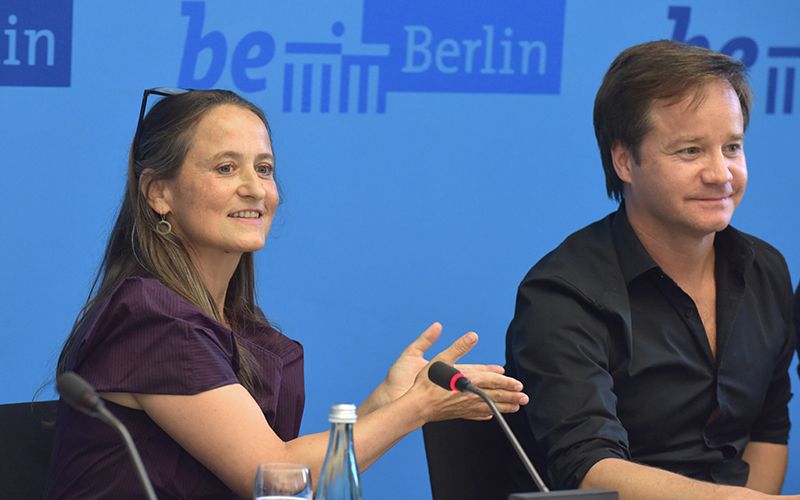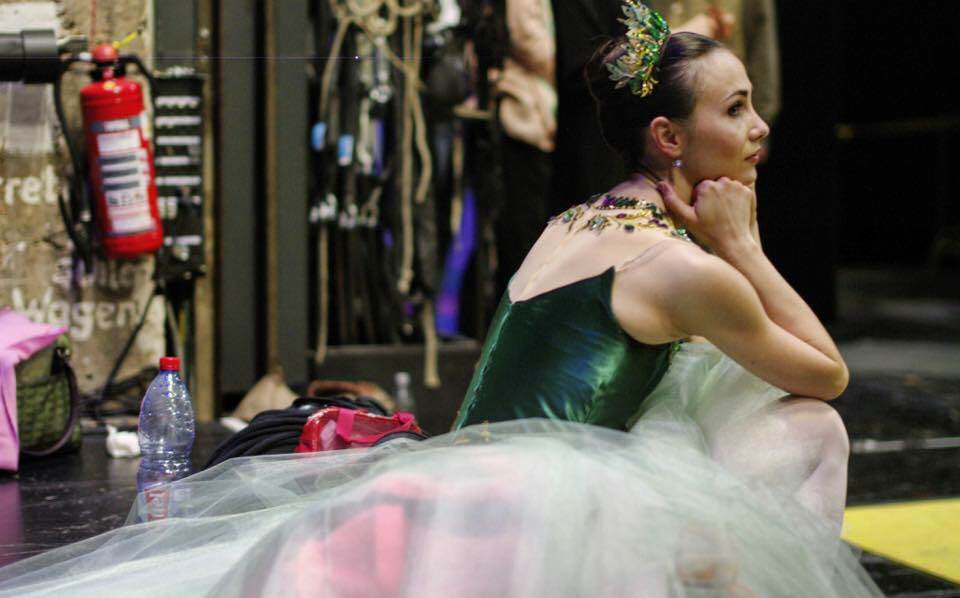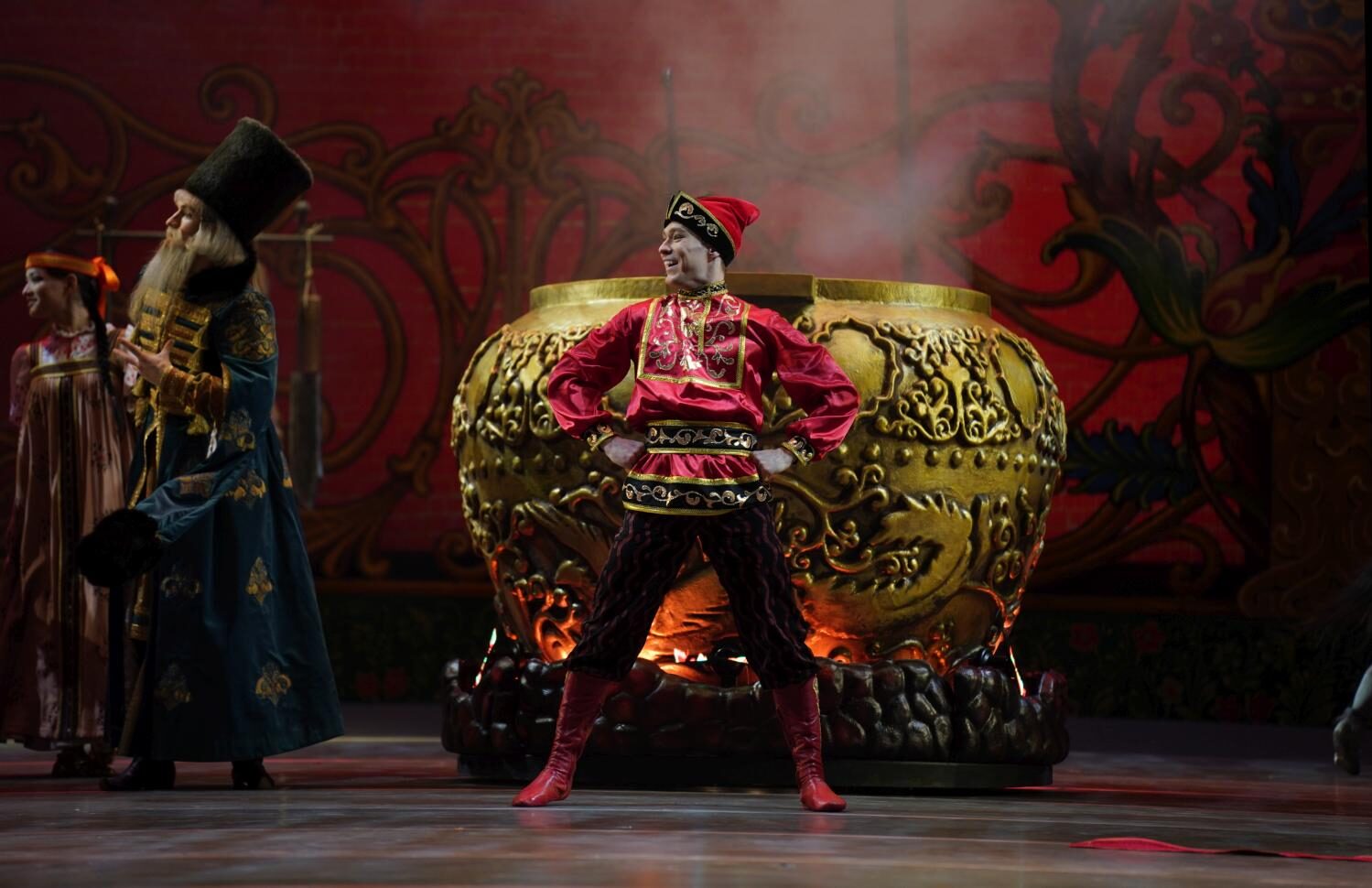State Ballet Berlin
Berlin, Germany
October 28, 2016
by Ilona Landgraf
Copyright © 2016 by Ilona Landgraf
 Reportedly, Sasha Waltz and Johannes Öhman’s contracts as future artistic directors of the State Ballet Berlin were ratified a few days ago. The procedure as taken by Berlin’s Senate Chancellery for Cultural Affairs puzzles one though. Personal decisions of this caliber require the approval of the Stiftungsrat of the Opera. The Stiftungsrat is the board of the Berlin Opera Foundation, a corporate body under public law, integrating Berlin’s three opera houses, the ballet company and the Stage Services Company as individual organizations under one roof. Seven members constitute this board, among them Micheal Müller, the cultural senator and governing mayor of Berlin. The Stiftungsrat requires a quorum of at least half of all the members.
Reportedly, Sasha Waltz and Johannes Öhman’s contracts as future artistic directors of the State Ballet Berlin were ratified a few days ago. The procedure as taken by Berlin’s Senate Chancellery for Cultural Affairs puzzles one though. Personal decisions of this caliber require the approval of the Stiftungsrat of the Opera. The Stiftungsrat is the board of the Berlin Opera Foundation, a corporate body under public law, integrating Berlin’s three opera houses, the ballet company and the Stage Services Company as individual organizations under one roof. Seven members constitute this board, among them Micheal Müller, the cultural senator and governing mayor of Berlin. The Stiftungsrat requires a quorum of at least half of all the members.
Müller and Tim Renner, state secretary for cultural affairs, announced the appointment of Waltz and Öhman on September 7th. Contractual arrangements had been made two days earlier. The Stiftungsrat, however, at that time consisted of only three members: Müller, the financial senator Matthias Kollatz-Ahnen and Rainer Döll, chairman of the staff council of the Foundation Opera in Berlin. Its other four members, experts elected by the the Berlin House of Representatives, had only been appointed with terms expiring August, 31st due to the upcoming elections in mid-September. A meeting of the Stiftungsrat to discuss the appointment of the new artistic directors didn’t take place, but isn’t imperative to make decisions.
Until a few days ago it had been uncertain whether the contracts had been signed and ratified or not. Rumors of the imminent signing of the contracts prompted the dancers of the State Ballet to intensify protests. In an official statement they accused Müller and Renner of undemocratic practices. They moreover pointed out that the Stiftungsrat is only allowed to make decisions in cases of emergency, if its board is less than half-staffed. But deciding upon a directorship, coming into operation in autumn 2019 is not a case of emergency.
On October 26th, the company also posted a “Save Staatsballett”-video on YouTube begging for support for their petition against Waltz / Öhman. It involves, among others, the principals Marian Walter, Dinu Tamazlacaru, Nadja Saidakova, Elena Pris and Ksenia Ovsyanick as well as most of the company’s ballet masters.
John Neumeier, whom the dancers asked for a statement, wrote the following open letter questioning the expertise of Waltz and Öhman in terms of the classical repertory. His statement is also printed in the current issue of the German “tanz” magazine:
“Dear dancers’ representatives of the Staatsballett Berlin,
Thank you very much for your message which reached me the day before the revival of my ballet “Nijinsky” in Hamburg. I have, of course, been following – through the press – the news and the discussions that followed the announcement of a new directorship for your company.
However, to comment officially on your situation puts me in a delicate and extremely sensitive position. Without criticizing this political decision, I can however remark that this decision does appear extremely surprising to me. Although a double directorship is proposed, the more well-known name of the team, Sasha Waltz, suggests that the thrust and especially the defining creative aspect of the company’s direction would be one of “Tanztheater”, while classical ballet, in Waltz’s words, would be delegated to the “Old Masters” department of the repertoire.
Johannes Öhman is lesser known, and lesser known are also his intentions. To my knowledge, his work with The Royal Swedish Ballet is primarily defined by an outreach to more contemporary influences in relation to the classical repertoire – for example, the internationally successful creation of Mats Ek’s “Juliet and Romeo” as well as the revival of “Swan Lake” by the same choreographer.
However, it is impossible for me to give an opinion about the consequences of a co-directorship that has not yet presented a program or which has not in practice begun.
Aside from this, to criticize a questionable or at least critically controversial decision would be particularly difficult for me, as the preparation for my first season in Hamburg as designated Ballet Director was under the shadow of extreme negative publicity from the press as well as serious doubts on the part of the ensemble of the Hamburg Ballet. The experience of that first season however, changed drastically the acceptance of my vision and the future of The Hamburg Ballet.”
John Neumeier, Artistic Director and Chief Choreographer of The Hamburg Ballet
Other prominent names took a stance as well. Martin Puttke, an internationally working ballet pedagog and ex-artistic director of the ballet companies in Berlin and Essen, criticized some German press organs for dismissing the dancers’ claim to have a voice in choosing their new director. An orchestra had the right to decide upon their conductor, while dancers were denied a say in terms of their artistic director, Puttke noted. But whereas musical instruments were lifeless objects, the dancers’ gave their living human bodies to the art form.
The Facebook site “Save Staatsballett”, run by the Berlin company, has collected additional supporting comments by John Clifford, ballet master of the George Balanchine Trust; Sandra Eshima, Balanchine Trust repetiteur; Prof. Sebastian Weigle, general music director of the Frankfurt Opera; Oliver Matz, Kammertänzer Berlin; and Christine Camillo, ballet mistress of the State Ballet Berlin.
Patrice Bart, choreographer, ballet associate-director and ballet-master of Paris Opera, posted “… knowing perfectly your qualities and abilities to perform the most important classical, neo-classical and contemporary ballets, I’m giving you my entire support in your contesting movement towards the nomination of Co-directors whose connotation is firmly contemporary.” Prof. Alex Ursuliak, ex-ballet master of Stuttgart Ballet and former director of the John Cranko School, expressed similar considerations: “… A dancers career is short and intense. They deserve to be lead by a directorship that has been raised in the traditions and also have themselves been active in the realm of the international classical ballet scene.” Maina Gielgud, former director of the Australian Ballet and the Royal Danish Ballet, put it straight, writing: “…This appointment is wrong, and needs to be rethought.”
Waltz and Öhman prefer to maintain their silence. Or to be precise, Waltz uses her husband, Jochen Sandig, and her company “Sasha Waltz & Guests” as mouthpieces. Sandig was threatening legal consequences because of reports alleging his wife’s withdrawal from the director’s post. The networking & development department of “Sasha Waltz & Guests”, feeling obliged to interfere too, polemized against the petition “Save Staatsballett” on change.org in an e-mail to the operator of the website. There is no need to save the Staatsballett, the e-mail says, because its existence isn’t endangered. The Staatsballett isn’t on the Red List of endangered culture. The e-mail further emphasized that Sasha Waltz is a choreographer – not a dance theater choreographer – with a twenty-three-year experience in leading large groups of dancers and artists. She has worked for ten years with the best classical ballet companies worldwide.
Whereupon Manuel Brug, dance and opera critic of the German newspaper “Die Welt”, remarked that this ten-year experience is restricted to single works of choreography. “Roméo and Juliette” for the Paris Opera Ballet in 2007 and in 2013 “Sacre” for the Maryinsky Ballet. “Roméo and Juliette” was later taken into the repertory of the ballet company of La Scala. That’s all.
“Körper” (“Bodies”), a Waltz creation from 2000, will be revived in the house of the Berliner Festspiele on four evenings starting on November 23rd. Interestingly, Öhman added the production to the repertory of the Royal Swedish Ballet earlier this year. You scratch my back and I scratch yours.
“Körper” reinforces the worries of the Berlin dancers.
The change at the helm of the State Ballet Berlin has been handled ineptly. Can the situation get more embarrassing for Waltz and Öhman? It should be high time for them as for the Senate Chancellery for Cultural Affairs to draw the consequences.

| Links: | Homepage of the State Ballet Berlin | |
| Photos: | 1. | Sasha Waltz and Johannes Öhman © Landesarchiv Berlin 2016 |
| 2. | Krasina Pavlova, dress rehearsal of “Jewels”, chor.: George Balanchine, State Ballet Berlin © Paul Busch 2016 |
|
| Editing: | Laurence Smelser |



